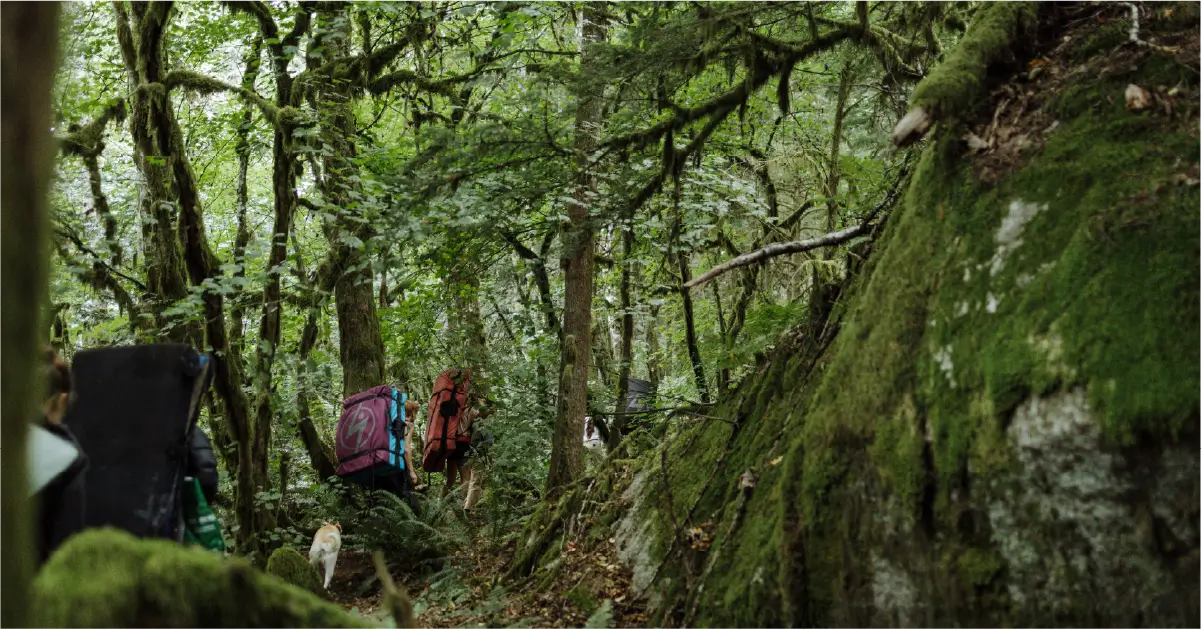Introduction: Why Squamish Is a World-Class Bouldering Destination
Squamish, British Columbia, is globally recognized not only for its towering granite walls and multi-pitch climbs but also as a premier bouldering destination. With an unparalleled variety of granite boulders, Squamish offers challenges for climbers of all skill levels—from beginners to elite boulderers. Areas such as the Grand Wall Boulders and the Smoke Bluffs provide everything from technical slabs and slopey mantles to powerful overhangs and intricate crimps. The region’s high-quality granite and stunning natural scenery, set against a backdrop of lush forests and majestic peaks, create an unforgettable rock climbing experience that draws climbers from around the world.
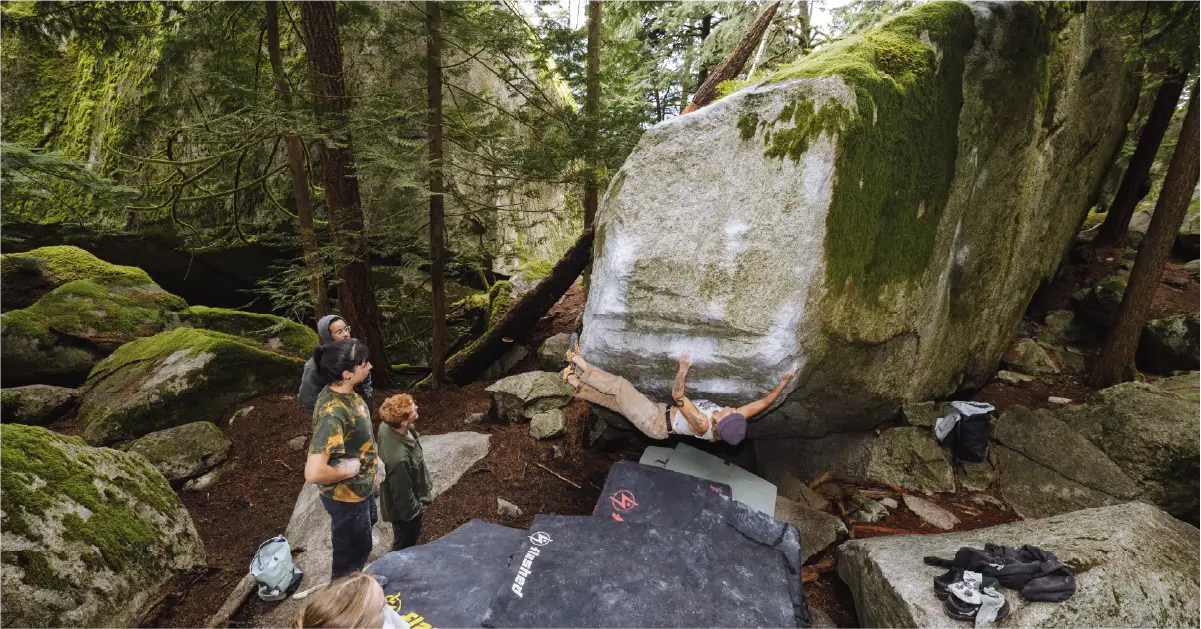
Climbing on Ancestral Lands: The Squamish and Lil’wat Nations
The Squamish region is not only rich in natural beauty but also steeped in a vibrant indigenous history. The area is home to the Squamish Nation, one of the Coast Salish peoples whose traditional territory encompasses the lands and waters surrounding Squamish. For countless generations, the Squamish Nation has maintained a deep connection with the land, relying on its resources for sustenance, cultural practices, and spiritual significance. Today, the Squamish Nation continues to assert their sovereignty and preserve their ancestral traditions, language, and cultural heritage. Visitors to Squamish have the opportunity to learn about and engage with the local indigenous communities through various cultural events, art displays, and educational initiatives.
In addition to the Squamish Nation, other indigenous populations have historical and cultural ties to the area. The Lil’wat Nation, a neighboring First Nations community, is located to the north of Squamish in the beautiful Pemberton Valley. The Lil’wat people have inhabited the region for thousands of years, relying on the abundant resources of the surrounding mountains, rivers, and forests. Their cultural practices, including traditional art, ceremonies, and storytelling, are deeply rooted in their connection to the land. The Lil’wat Nation plays an active role in preserving their heritage and engaging in land stewardship initiatives, ensuring the sustainability of their cultural traditions and the natural environment for future generations. Exploring Squamish provides an opportunity to appreciate and respect the enduring presence and contributions of the indigenous populations that have shaped the region’s history
Visitors are encouraged to learn more and engage respectfully with local Indigenous communities. Follow initiatives like @indigenouswomenclimb for insights into Indigenous climbing perspectives and stewardship.
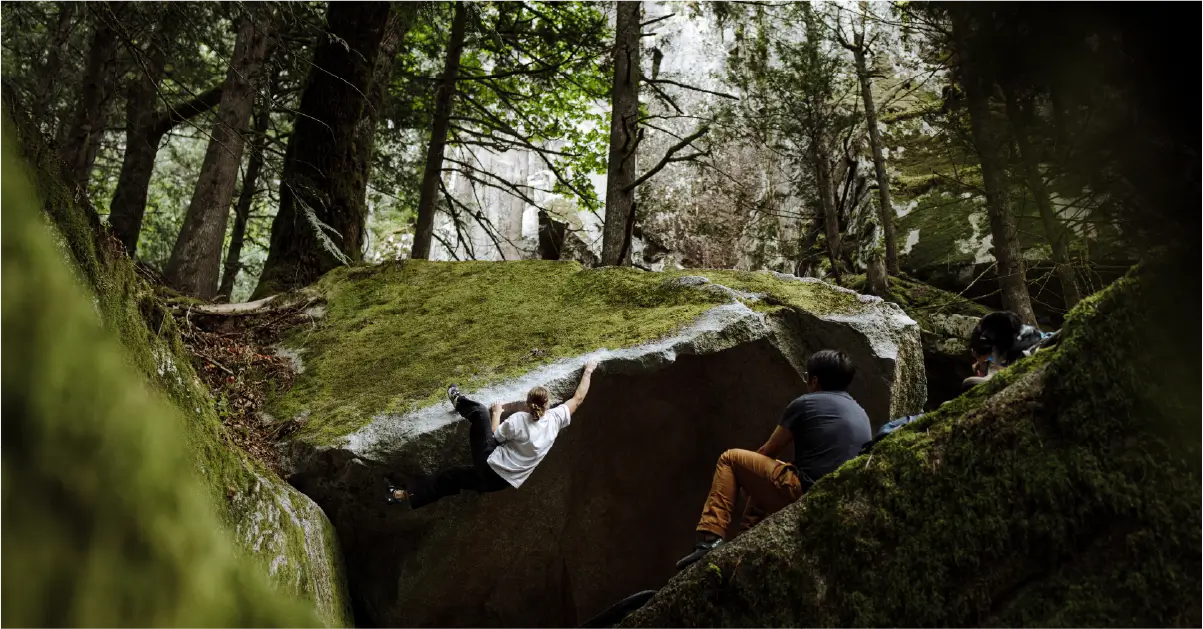
Essential Squamish Bouldering Resources
- Guidebook: Squamish Bouldering (4th Edition) by Marc Bourdon
- App: Kaya — for route beta, tick lists, and community insights
Travel Logistics: How to Get to Squamish
Squamish is just a one-hour drive from Vancouver, making it highly accessible. For convenience, flying into Vancouver International Airport (YVR) and renting a car is recommended. Public transport options exist but limit access to remote bouldering zones.
Best Time to Boulder in Squamish
The primary bouldering season runs from May to September, with July and August offering the most stable weather. For fewer crowds and cooler temps, consider late spring or early fall. Keep in mind that Squamish’s microclimates can produce climbable days even during traditionally rainy months.
Top Squamish Bouldering Areas
Grand Wall Boulders
- Variety of problems from V0 to double-digits
- Must-try: Viper (V5)
Apron Boulders
- Close to the Grand Wall
- Classic: Titanic (V3)
North Walls Boulders
- Secluded setting
- Classic: Teenage Lobotomy (V4)
Iconic Problems (Top 100)
- Heartbreak Hotel (V2)
- Crackhead (V3)
- Easy in an Easy Chair (V4)
- Super Fly (V4)
- Swank Stretch (V5)
- The Fuzz (V7)
- Worm World Cave (V9)
- The Rookie (V8)
Complete list: Sendage Top 100

Where to Stay: Squamish Accommodation for Climbers
Camping
- Stawamus Chief Campground – $10/person – First Come First Serve – Max stay 14 days. Quite difficult to find a spot during the peak season. Advice would be to chat with folks who are about to leave to get their spot as soon as they pull out.
Closest to major bouldering areas. - Mamquam River Campground – $20 drive-in or $10 walk-in – Reservations Required between April 21st through September 30th. $10 cash weekday camping in self-contained vehicles is available in the overflow parking lot in The Dirtbag Zone most weeknights.
Budget-friendly and climber-focused. - Klahanie Campground – $45+ – Reservations Required.
Good for RVs and serviced sites. - Alice Lake Provincial Park – $35/night – Reservations for most sites during, book well in advance. Max stay 14 days.
Family-friendly and close to northern crags.
Note: Avoid unauthorized camping in sensitive areas such as Spit Road, Downtown Squamish, Mamquam FSR, and residential neighborhoods.
Other Options
- Airbnbs and local hotels offer comfort and proximity to downtown amenities.
- Squamish Adventure Inn – Hostel style plus private room options. Affordable and close to town.
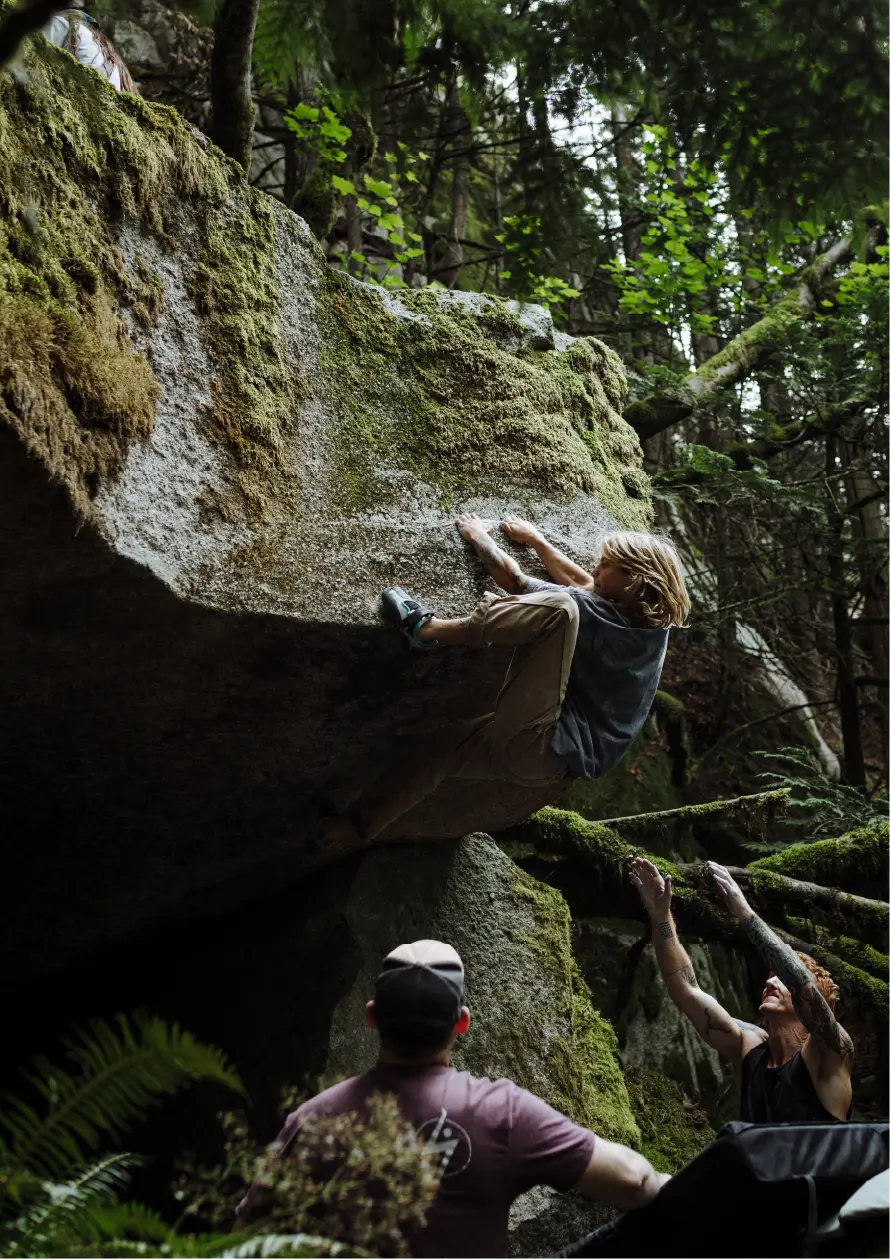
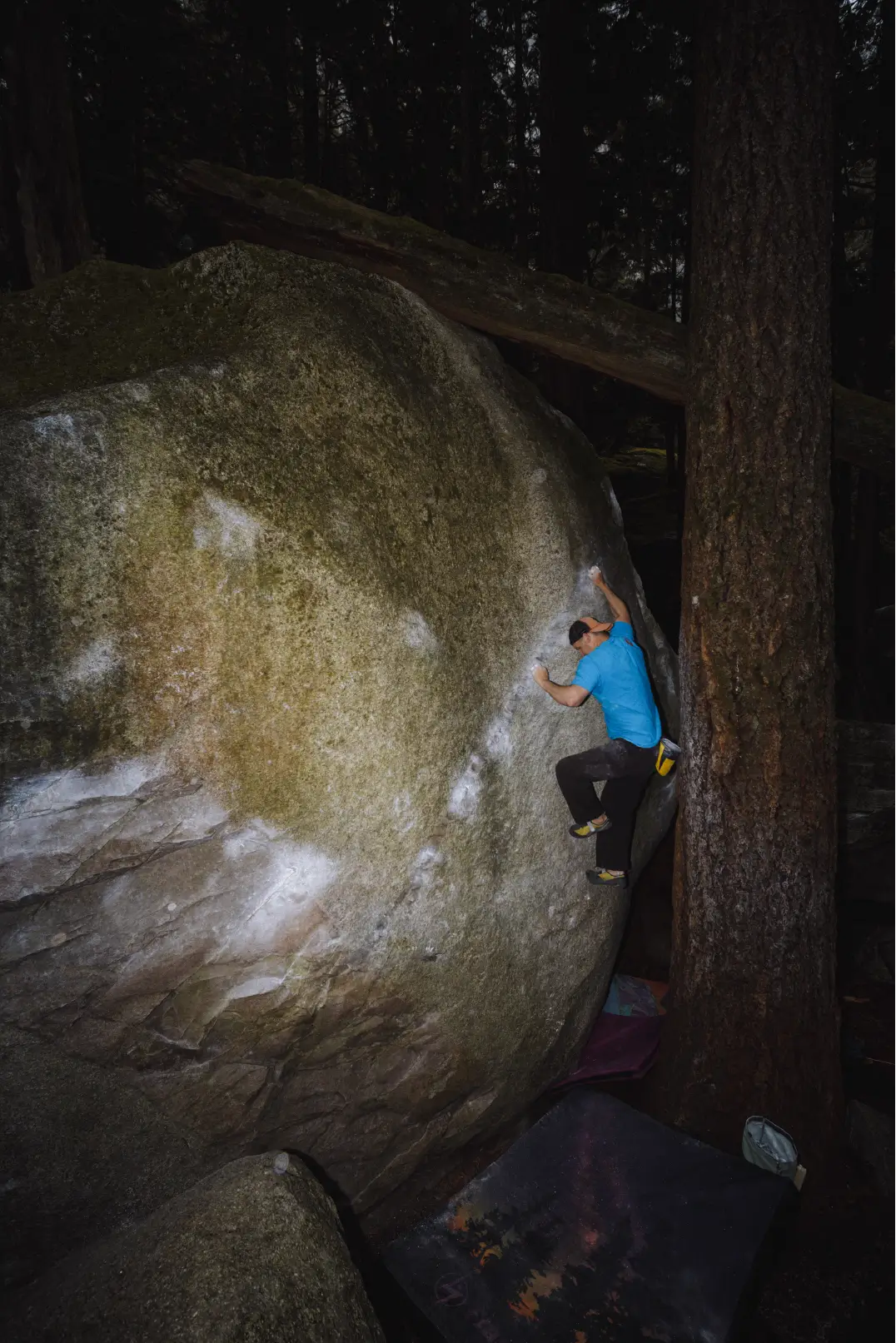
Climber Essentials and Amenities
Water Access
- Fill up at Provincial Parks like Stawamus Chief and Alice Lake.
Gear Shops
- Climb On Equipment
- Valhalla Pure Outfitters
Food & Drink
- Alice & Brohm – Real fruit ice cream
- Fox & Oak – Donuts and premium coffee
- Green Olive Market & Café – European breakfasts
- Sunflower Bakery Café – Fresh pastries and breakfast
- A-FRAME Brewing Co. – Craft beer and burgers
- Backcountry Brewing – Pizza and beer
- Samurai Sushi – Affordable sushi
- Sunny Chibas – Fried chicken and Mexican fusion
Groceries
- Nesters Market
- Save-On-Foods
Rest Days: Things to Do Beyond Bouldering
- Swim at Alice Lake, Brohm Lake, or Cat Lake
- Mountain bike at Diamond Head or Alice Lake (Rentals: Corsa Cycles)
- Sea to Sky Gondola – Panoramic views
- Hike the Chief – Iconic Squamish summit
- Shannon Falls – Scenic waterfall for picnics
- SUP rentals – Squamish Watersports
Climbing Etiquette & Sustainability
Squamish’s pristine natural setting requires climbers to act as stewards of the land:
- Practice Leave No Trace principles
- Stick to established trails
- Pack out all waste
- Use designated toilets or portable options
- Never camp in unauthorized areas
Support the work of the Squamish Access Society, which advocates for responsible climbing and positive community relations.
Gear Checklist for Squamish Boulderers
- Crash pads (rent from Climb On if needed)
- Chalk & chalk bag
- Passport (for international visitors)
- Rain jacket
- Bug spray
- Swimsuit
- Bear-safe food storage (use provided boxes)
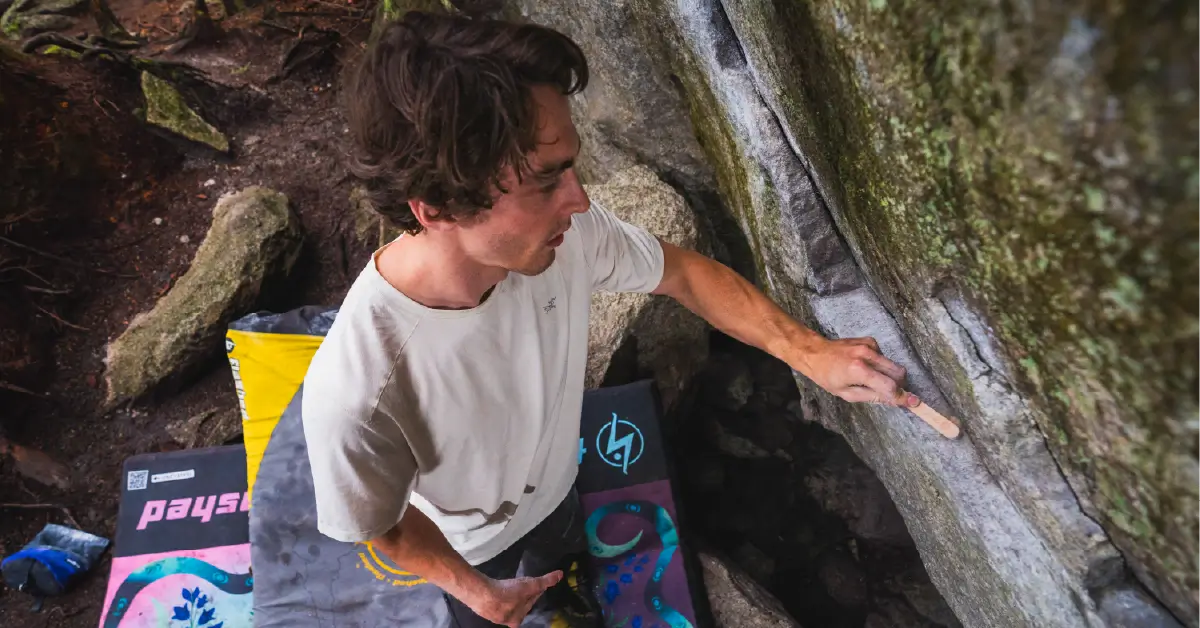
Final Thoughts: Why Every Boulderer Should Experience Squamish
Squamish stands as a global bouldering hotspot offering a diverse range of climbs, exceptional granite quality, and an inclusive, respectful climbing community. Whether you’re sending your first V1 or projecting double-digit problems, Squamish bouldering provides an experience that blends challenge, beauty, and community spirit.
Plan ahead, climb responsibly, and enjoy the adventure of a lifetime in Squamish.
Check out more of our climbing destination guides, like Rocklands or Joe’s Valley.

